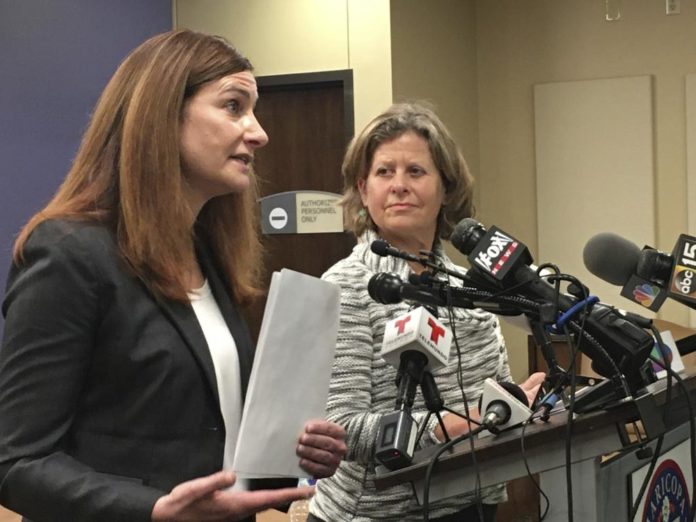
As some expressed cautious optimism that Arizona’s surge of COVID-19 will soon peak, public health experts, overworked health care workers, and former Arizona State University students reflected Wednesday on the anniversary of the state’s first coronavirus case.
It was the start of what has now been a grueling two-year ordeal.
“It’s just a staggering effect, something that has now become the leading cause of death here in Arizona … easily outpacing both heart disease and cancer,” Dr. Joshua LaBaer, executive director of Arizona State University’s Biodesign Institute, said during a virtual news briefing.
The state Department of Health Services on Wednesday reported 275 additional COVID-19-related deaths. It’s the highest daily count of deaths seen during the pandemic, LaBaer said.
Dr. Michael White, chief clinical officer of Phoenix-based Valleywise Health, remembers wondering how health care systems and hospitals would prepare for someone with the virus coming in. Today, like other hospitals, Valleywise is consumed with trying to juggle a high volume of patients for the highly transmissible omicron variant or other issues. Meanwhile, other surgeries get postponed and health care workers are emotionally taxed.
“We’ve seen people that have left health care that need a break from being able to do this work because it is hard work,” White told reporters.
As of Tuesday, statewide hospitalizations due to COVID-19 dipped slightly to 3,511.
Valleywise is treating 70 patients for COVID-19 with 10 of them in the ICU — the most in this wave. But it’s not far off from the highest they’ve ever seen — 88 in January 2021 — according to White. But he is hopeful that their hospitalizations will crest by the end of this week or early next week.
LaBaer concurred that things could peak by the beginning of February. Data indicates Arizona’s seven-day average of new cases has started decreasing the past two days.
It was January 26, 2020, when Arizona’s first coronavirus case surfaced, bringing the nationwide total to five. The infected person lived in Maricopa County, had ties to ASU, and had a history of travel to Wuhan, China, state health officials said at the time.
Like U.S. health officials, ASU administrators tried to squelch panic and reassured students they were safe from the virus. Still, many decried having to be on campus. Within two days, nearly 20,000 signed an online petition to cancel classes.
It wasn’t until mid-March 2020 that ASU transitioned to remote learning. Students were given a choice of learning environment during the following semester and through spring 2021. It was last fall that the school fully returned to in-person.
ASU also banned students, faculty, and staff who travel on behalf of the university from going to China. Meanwhile, students of Asian descent almost immediately faced being shunned.
Aretha Deng, a junior then, still remembers sitting down a day after the news broke at a communal table where several students had their stuff spread out.
“I sat down and within like a minute or so they gathered their stuff and they left,” said Deng, who graduated in May and now lives in Modesto, California. That same week her friend was in an elevator when a man going to the same floor “proceeded to ask my friend who’s also Chinese American ‘Are you Chinese?’ My friend said yes and the guy got off at (another) floor.”
Mezquite Nguyen, who went by Tevinh at the time and is non-binary, was a senior and president of the ASU Asian/Asian Pacific American Students’ Coalition. They remember writing a news release “to call out people using quote-unquote ‘public health’ rhetoric and just fears of coronavirus to justify xenophobic and racist sentiments.”
There have been more than 10,000 anti-Asian hate incidents nationwide in the last two years, according to the Stop AAPI Hate reporting center.
“It’s very weird to look back,” said Nguyen, who now lives in Austin, Texas. “At that time, a lot of people were doubting the severity of the racism and xenophobia.”
While the pandemic lingers, some like LaBaer are trying to highlight the positive. Unlike two years ago, there were no vaccines.
“Just imagine where we would be if an omicron variant struck us and we did not have some degree of vaccination that could protect us against severe illness,” LaBaer said. “I think the outcomes would be even more devastating.”
State health officials on Wednesday reported 18,299 new confirmed cases. That brings Arizona’s total number of cases during the pandemic to nearly 1.8 million. The death toll is now at 25,899.
Republished with the permission of the Associated Press.














